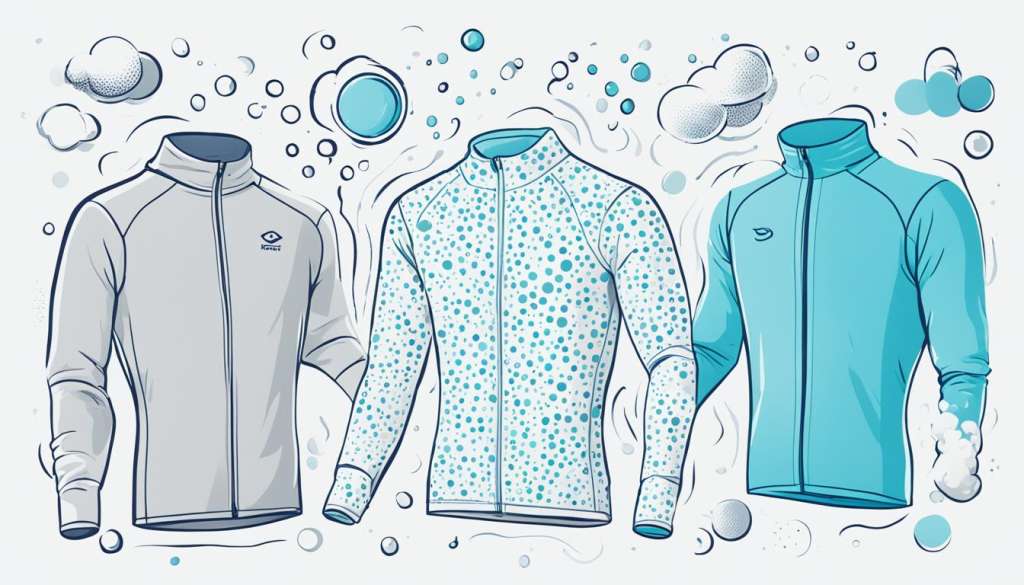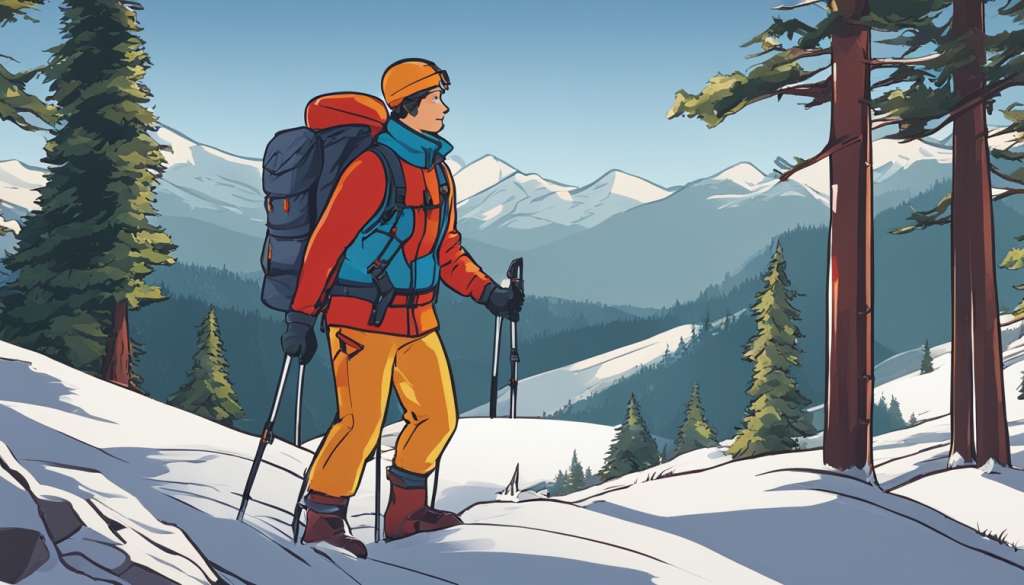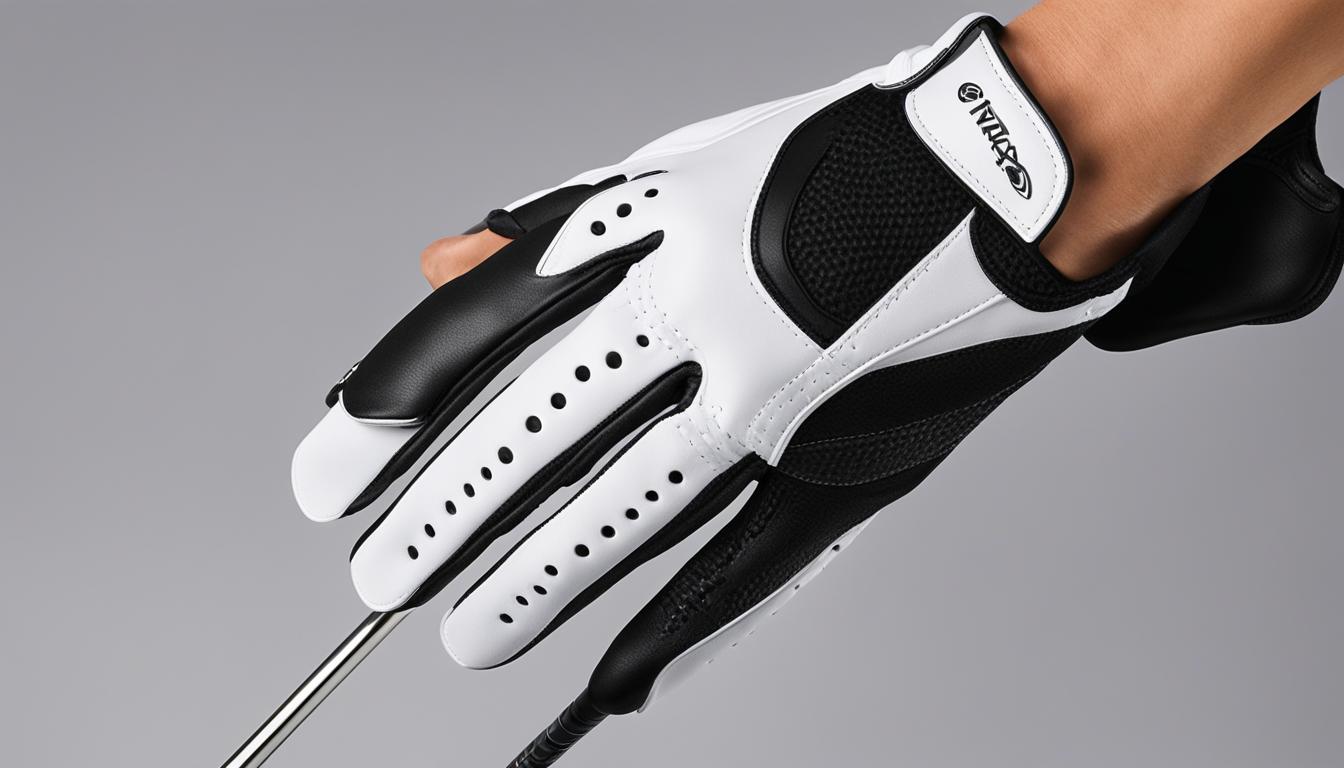Thermal base layers are key to staying warm and dry in the cold. They help control your body temperature and keep moisture away. This is crucial for outdoor activities in the cold.
Base layers are the first layer of your outfit for cold weather. They don’t just sit there like old-school thermal underwear. Instead, they actively move sweat away from your skin. This keeps you comfortable and safe in different conditions.
The type of fabric in your base layers is very important. You can choose from natural fibers like merino wool or synthetic materials. Each has its own benefits, letting you pick the best for your activities and what you like.
Learning about base layers can help you pick the right ones for your outdoor adventures. Let’s look closer at how thermal base layers can make your cold-weather activities better.
Understanding the Importance of Base Layers
Base layers are key for outdoor activities and sports in the cold. They keep you comfy and dry. Let’s explore why base layers are essential for your outdoor adventures.
What are base layers?
Base layers are thin, snug clothes you wear closest to your skin. They protect you from the elements by managing moisture and keeping you warm. These layers come in various weights and materials, each suited for different conditions and activities.
How base layers regulate body temperature
Base layers are great at wicking away sweat. This lets sweat evaporate quickly, keeping your body temperature steady. They keep your skin dry, which stops you from getting too hot or too cold. This also means you won’t feel uncomfortable from moisture.
Difference between base layers and thermal underwear
Base layers and thermal underwear both keep you warm, but they’re used in different ways. Base layers manage moisture and regulate temperature for various activities. Thermal underwear focuses on insulation and is best for cold, less active times. Here’s how they compare:
| Feature | Base Layers | Thermal Underwear |
|---|---|---|
| Primary Function | Moisture wicking, temperature regulation | Insulation, warmth |
| Fit | Snug, form-fitting | Looser, more relaxed |
| Activity Level | High to moderate | Low to moderate |
| Materials | Synthetic blends, merino wool | Cotton, fleece, wool blends |
Knowing these differences helps you pick the right layer for your activities. This ensures you perform well and stay comfortable outside.
Choosing the Right Fabric for Your Base Layer
When picking a base layer, the fabric is key for both performance and comfort. Let’s look at different materials to help you choose the best for your outdoor adventures.
Merino Wool: Nature’s Performance Fiber
Merino wool is a top pick for base layers. It’s a natural material that keeps you warm in the cold and cool in the heat. It also fights off odors, making it great for long outdoor activities.
Synthetic Materials: Quick-Drying and Affordable
Synthetic fibers like polyester and nylon are great alternatives. They dry fast and are often cheaper. They’re tough and keep their shape, perfect for activities where sweat is a big issue.
Silk and Bamboo: Alternative Natural Options
If you’re looking for other natural options, consider silk and bamboo. Silk is light and insulates well, feeling soft on your skin. Bamboo is good for the planet and fights odors naturally. Both are good for moderate weather.
| Fabric | Pros | Cons | Best For |
|---|---|---|---|
| Merino Wool | Excellent temperature regulation, odor-resistant | Higher cost, longer drying time | All-season outdoor activities |
| Synthetic Fibers | Quick-drying, affordable, durable | Less odor-resistant, less breathable | High-intensity sports, budget-conscious users |
| Silk | Lightweight, smooth feel | Less durable, expensive | Mild weather conditions, layering |
| Bamboo | Eco-friendly, antimicrobial | Less moisture-wicking than synthetics | Casual wear, sensitive skin |
Pick your base layer fabric based on your activity level, climate, and what you like. Each material has its own benefits to make your outdoor time better.
The Science Behind Moisture Management
Moisture management is key for base layers. It keeps you dry and comfy during exercise. Let’s explore the science behind this important process.
Sweat evaporation is vital for keeping cool. When you work out, sweat helps cool your body. Base layers move moisture away from your skin to help this process.
Wicking technology is how base layers do this. It uses capillary action to pull sweat from your skin to the fabric’s surface. This happens thanks to the fibers in breathable fabrics. Some fibers pull water in, while others push it away.
This mix of fibers creates a moisture gradient. Sweat moves from your skin to the fabric’s surface. This stops sweat from building up on your skin, keeping your body temperature stable.
| Fiber Type | Property | Function |
|---|---|---|
| Synthetic | Hydrophobic | Repels moisture, pushes it to outer layer |
| Wool | Hydrophilic | Absorbs moisture, moves it away from skin |
| Bamboo | Both | Balances moisture absorption and evaporation |
Good moisture management in base layers stops you from getting too cold or too hot. It helps sweat evaporate well. Knowing this science helps you pick the best base layer for your activities.
Key Features to Look for in Quality Base Layers
Choosing the right base layers is key for comfort and performance outdoors. They should have an ergonomic design and smart comfort features. This makes your outdoor adventures better.
Proper Fit and Sizing
A good fit is essential for base layers. They should fit your body closely but not too tightly. This snug fit helps keep moisture away from your skin.
Try on different sizes to find the perfect balance. It should be both comfortable and functional.
Flatlock Seams and Tagless Designs
Comfort features like flatlock seams reduce irritation. These seams sit flat against your skin, so you won’t feel any rubbing. Tagless designs also mean no annoying labels to bother you.
Thumbholes and Extended Sleeves
Thumbholes and extended sleeves add extra coverage. They keep your wrists warm and stop your sleeves from riding up. This makes layering easier and more comfortable.

| Feature | Benefit |
|---|---|
| Ergonomic Design | Enhances range of motion |
| Performance Fit | Improves moisture wicking |
| Flatlock Seams | Reduces chafing |
| Thumbholes | Provides extra coverage |
Focus on these key features to pick base layers that perform well and are comfortable. The right base layer is the foundation of a good layering system.
Thermal Base Layers Guide
Thermal base layers are key to staying warm in cold weather. They are vital for winter sports and outdoor activities. This guide will show you how to pick the best base layers for your needs.
When picking base layers, think about the material, fit, and weight. Merino wool and synthetic fabrics are great because they keep moisture away. Merino wool also fights odors naturally, and synthetics dry fast. The fit should be close but let you move easily.
Layering is key to making your base layers work well. Begin with a thin layer that wicks away moisture. Add insulating layers as needed, and finish with a protective outer shell. This way, you can adjust your clothes for different activities and weather.
When shopping for winter sports clothes, look for base layers with flatlock seams to avoid irritation and thumbholes to keep sleeves in place. Some also have UV protection for high-altitude sports.
- Choose moisture-wicking materials
- Ensure a snug but comfortable fit
- Layer appropriately for your activity
- Look for features like flatlock seams and thumbholes
Proper care of your base layers makes them last longer. Always follow the washing instructions and skip fabric softeners, as they can reduce moisture-wicking. With the right choice and care, your thermal base layers will keep you cozy in various outdoor settings.
Layering Systems: How to Combine Base Layers with Other Clothing
Layering is crucial for staying comfy in outdoor activities. Your base layer, mid-layers, and outer shells work together. This creates a flexible clothing system. It helps you adjust to weather changes and activity levels.
Begin with a moisture-wicking base layer to keep sweat away from your skin. Then, add insulating mid-layers for warmth. These can be fleece, wool, or synthetic materials. Finally, finish with a protective outer shell against wind and rain.
Layering is all about flexibility. You can easily add or remove layers as needed. This keeps your body temperature just right in different conditions. It’s a smart way to stay warm that outdoor lovers recommend.
| Layer | Function | Common Materials |
|---|---|---|
| Base Layer | Moisture wicking | Merino wool, synthetic fabrics |
| Mid-Layer | Insulation | Fleece, down, synthetic fill |
| Outer Shell | Weather protection | Waterproof/breathable fabrics |
The key is to make a system that works well together. Each layer should support the others. This method of layering ensures better moisture management and temperature control. It’s the secret to staying comfy in various outdoor settings.
Caring for Your Base Layers: Washing and Maintenance Tips
Keeping your base layers in good condition is important. By washing them correctly and taking care of the fabric, you can make them last longer. This also helps keep them smelling fresh.
Washing Instructions for Different Materials
Each type of base layer has its own care needs. Merino wool should be washed in cold water with a gentle detergent. Synthetic materials can be washed in warmer water with regular detergent. Always look at the care label for the best way to wash them.
| Material | Water Temperature | Detergent Type | Wash Cycle |
|---|---|---|---|
| Merino Wool | Cold | Wool-specific | Gentle |
| Synthetic | Warm | Regular | Normal |
| Silk | Cold | Delicate | Hand wash |
Drying and Storage Recommendations
It’s best to air dry most base layers. You can lay them flat or hang them up. This helps keep their shape and lets them wick moisture well. Keep them in a cool, dry spot, away from sunlight to avoid damage.
Extending the Life of Your Base Layers
Cleaning them regularly helps with odor control. Wash them after each use to stop bacteria from growing. Don’t use fabric softeners, as they can block the fibers’ ability to wick moisture. Switching up your base layers helps them wear evenly. With the right care, your base layers will stay in great shape for many seasons.
Base Layers for Different Activities: From Hiking to Skiing

Choosing the right base layer is key for your sport performance and comfort. Different activities need specific gear for various levels of effort and weather. Let’s look at how to pick the best base layer for your adventures.
Hiking and Trekking
For hiking, go for lightweight, breathable base layers. They keep you dry by wicking away moisture. Choose materials like merino wool or synthetic blends that fight off odors for long hikes.
Skiing and Snowboarding
Winter sports need base layers that keep you warm and manage moisture. Pick thicker, thermal ones for cold weather. Look for designs with longer sleeves and thumbholes to keep snow out at your wrists.
Running and Cycling
High-energy activities do well with ultra-light, quick-drying base layers. Compression fits help with blood flow and reduce muscle tiredness. Choose ones with flatlock seams to avoid irritation from movement.
| Activity | Key Features | Recommended Material |
|---|---|---|
| Hiking | Breathable, Odor-resistant | Merino wool, Synthetic blend |
| Skiing | Insulating, Moisture-wicking | Thermal synthetic, Wool blend |
| Running | Lightweight, Quick-drying | Synthetic, Bamboo blend |
The best gear adapts to your body’s needs. Whether you’re tackling trails or skiing, the right base layer makes your outdoor time better. It keeps you comfy in any weather.
Top Brands and Product Recommendations
Finding the right base layer is key to a great outdoor experience. Let’s explore some top picks from gear reviews and product comparisons. This will help you find the perfect fit for your needs.
Best Overall Base Layers
Smartwool and Icebreaker are top performers in terms of performance ratings. Their merino wool base layers offer great temperature control and fight off odors well. Patagonia’s Capilene line is also praised for its comfort and durability.
Budget-Friendly Options
You don’t have to spend a lot to get quality base layers. Under Armour and The North Face offer synthetic options that are both affordable and effective. These choices still manage moisture and dry quickly.
Specialized Base Layers for Extreme Conditions
For extreme environments, you need specialized gear. Brynje and Helly Hansen make base layers for the coldest conditions. They focus on keeping you warm and dry with their enhanced insulation and moisture management.
| Brand | Material | Best For | Price Range |
|---|---|---|---|
| Smartwool | Merino Wool | All-around use | $$$ |
| Under Armour | Synthetic | Budget performance | $$ |
| Brynje | Polypropylene | Extreme cold | $$$$ |
Think about the material, fit, and use you need when picking a base layer. With these tips, you’re ready to choose well for your next outdoor adventure.
Sustainability in Base Layer Production
The outdoor gear industry is moving towards eco-friendly materials and ethical manufacturing. Brands now offer sustainable outdoor gear, including base layers. These include options made from recycled fabrics, which cut down on waste and save resources.
Merino wool and bamboo are great choices for base layers because they’re sustainable. They grow fast and use less water than cotton. Some brands even use recycled plastics to make synthetic base layers, turning trash into useful clothing.
When you’re looking for base layers, pick brands that care about the planet. Look for labels that talk about recycled content or sustainable production. Choosing eco-friendly base layers helps support companies that put the planet first while keeping you warm and comfy outside.
Sustainable base layers also tend to last longer, which saves you money over time. They’re built to handle lots of use and washing, so you won’t need to buy new ones as often. By picking quality, sustainable gear, you’re making a choice that’s good for your outdoor adventures and the environment.

